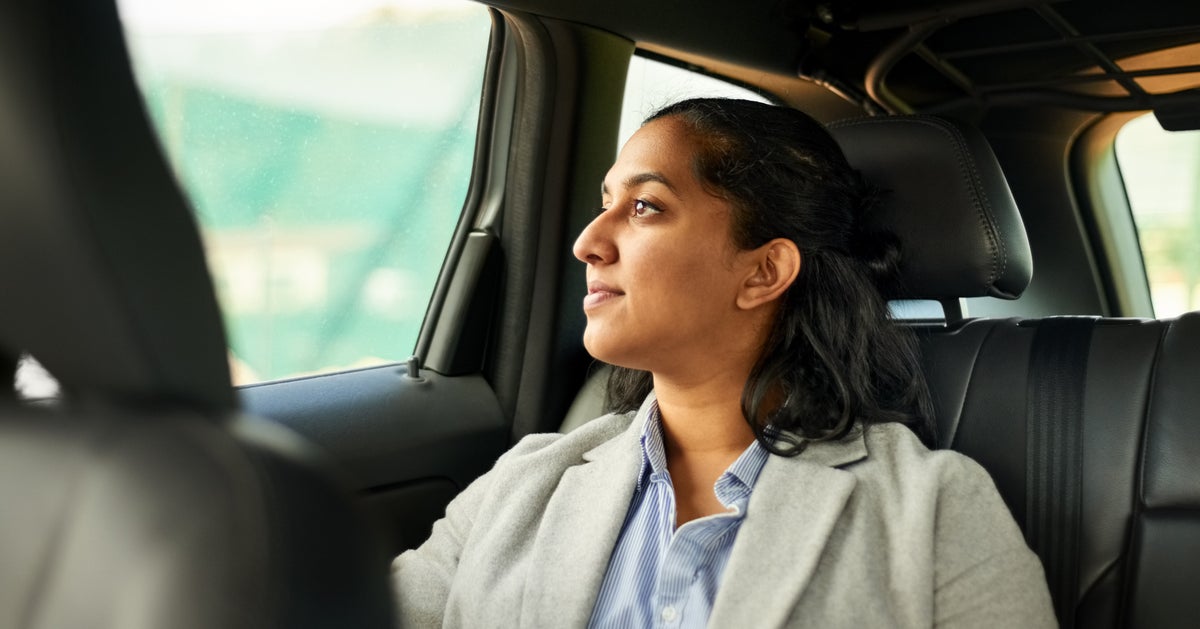Once again, the Reddit community and I find ourselves pondering the same question: Why does riding in an Uber or Lyft make us feel nauseous? This viral thread perfectly captures the queasy phenomenon, proving that most of us haven’t had an original experience in our lives. Perhaps you’ve experienced this discomfort as well. It’s strange how we don’t feel sick when we’re driving ourselves or when a friend is behind the wheel. But the minute we step into a cab, we know the next 20 minutes are going to be rough. And considering how often we rely on this mode of transportation – whether it’s to catch a flight, return home after a night out, or simply because we’re too tired to drive – it becomes a real problem. So what can we do about it?
Let’s explore some potential reasons for feeling nauseous in Ubers, Lyfts, or cabs, as explained by doctors. According to Dr. Laura Purdy, a board-certified family medicine physician, motion sickness may be the culprit. When driving with friends or alone in our own cars, our focus is primarily on the road ahead, while our inner ears sense movement. However, when we’re alone in cabs or Uber cars, our gaze tends to wander, whether we’re reading or staring at stationary objects. In both cases, our inner ears detect movement, leading to nausea, dizziness, and sweating. So maybe it’s best to avoid studying our driver’s car or fixating on the sign on the back of their front headrest.
As a passenger, we’re already at a disadvantage compared to the driver. Dr. Sarah Robbins, a gastroenterologist and gut health expert, explains that the driver’s brain uses different motor skills to control the car, allowing them to predict the motion and reduce any sensory conflict that could trigger motion sickness. Additionally, some individuals are more prone to motion sickness than others due to factors such as gender (women), pregnancy, age (children), and migraines.
Another factor that contributes to feeling nauseous in a car is being seated in the back. If you’ve ever ridden in the back of a roller coaster and felt jerked around, you understand this phenomenon. According to Dr. Samantha Nazareth, a board-certified gastroenterologist, being in the back seat exposes you to more force during sharp turns. Furthermore, the lack of adequate air conditioning in the back can increase the likelihood of motion sickness.
Of course, the driver’s driving style also plays a role. We’ve all experienced that white-knuckle grip on the door when an Uber or Lyft driver navigates through traffic with questionable skills. Dr. Purdy explains that rapid acceleration, sudden stops or turns, and bumpy roads can trigger motion sickness and cause nausea in passengers.
Lastly, it’s understandable to feel anxious when riding in a stranger’s car. The concern for our safety and the potentially awkward small talk can manifest as physical symptoms, including nausea. This anxiety can be even more intense when we’re in an unfamiliar city or on a new route.
Luckily, there are steps we can take to alleviate nausea during our rides. While some factors are beyond our control, knowing the source of our nausea can help us manage or even prevent future episodes. Experts, including Dr. Purdy, Dr. Nazareth, and Dr. Robbins, recommend the following tips:
1. Ask if you can crack a window for fresh air.
2. Request to sit in the front seat, if you feel safe doing so.
3. Avoid using your phone or engaging in reading.
4. Look out the window as much as possible, focusing your gaze on the horizon or distant points.
5. Distract yourself by having a conversation or listening to music.
In summary, next time you find yourself feeling queasy after a few drinks or don’t want to inconvenience a friend by asking for a ride to the airport, remember that you can survive an Uber, Lyft, or cab ride. With some fresh air, deep breaths, and minor adjustments, you can minimize the waves of nausea.
Denial of responsibility! VigourTimes is an automatic aggregator of Global media. In each content, the hyperlink to the primary source is specified. All trademarks belong to their rightful owners, and all materials to their authors. For any complaint, please reach us at – [email protected]. We will take necessary action within 24 hours.


